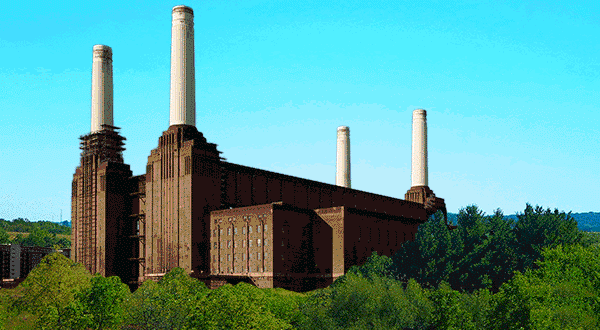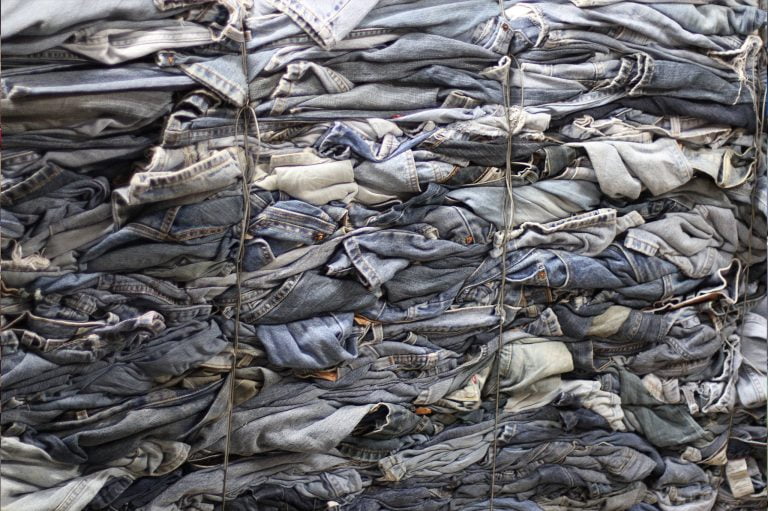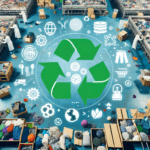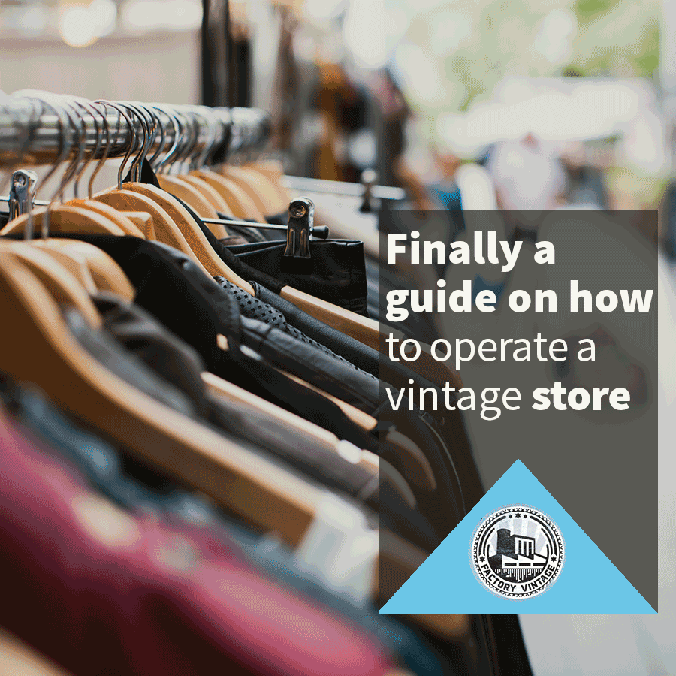
The fast fashion industry has a significant impact on the environment, but there is a simple solution that can help mitigate its effects: vintage clothing. From reducing textile waste to supporting small businesses, vintage clothing has a number of positive impacts on the environment. By choosing vintage clothing, consumers can reduce waste, decrease demand for fast fashion, lower their carbon footprint, conserve natural resources, and support a more sustainable future. The choices we make as consumers have a significant impact on the environment, and the fashion industry is no exception. In this article, we will delve into the statistics that demonstrate the numerous ways in which vintage clothing helps the environment and contributes to a more sustainable future.
The Impact of Fast Fashion on the Environment
Fast fashion is a major player in the fashion industry, offering consumers the latest styles at low prices. However, the cost of fast fashion extends far beyond the price tag and has a significant impact on the environment. The production of new clothing requires significant amounts of energy, water, and other resources, which can put pressure on local ecosystems and contribute to environmental degradation. The production of new clothing also contributes to greenhouse gas emissions, including carbon dioxide, and the fast fashion industry contributes to the growing problem of textile waste.
One of the most significant impacts of fast fashion on the environment is the use of finite natural resources, such as oil, coal, and minerals. The production of new clothing often involves the use of harmful chemicals, such as pesticides, which can have negative impacts on the environment and human health. The fast fashion industry contributes to the release of carbon dioxide into the atmosphere, which contributes to global warming and climate change, and encourages consumers to dispose of their clothing quickly, contributing to the growing problem of textile waste.
Despite the negative impacts of fast fashion on the environment, there are steps that consumers can take to reduce its impact. One of the most effective ways to reduce the impact of fast fashion is to choose vintage clothing, which reduces the demand for new clothing and supports a circular economy. By making more sustainable choices, consumers can play a role in creating a more sustainable future for people and the planet.
How Vintage Clothing Reduces Textile Waste

Textile waste is a growing problem, with much of it ending up in landfills where it can take decades to break down. The fast fashion industry contributes to the problem of textile waste by encouraging consumers to dispose of their clothing quickly. Vintage clothing is a simple solution to reducing textile waste, as it reduces the demand for new clothing and supports a circular economy, which aims to keep resources in use for as long as possible.
In addition to reducing textile waste, vintage clothing also supports small businesses and local economies. Many vintage clothing stores are small, independently-owned businesses, and by choosing to shop at these stores, consumers are supporting small businesses and local economies. This has a positive impact on the community, as small businesses often have a more sustainable approach to fashion, using locally-sourced materials and reducing waste. By choosing vintage clothing, consumers can reduce textile waste, support a circular economy, and contribute to a more sustainable future.
10 Statistics You Probably Didn’t Know About Vintage Clothing
- Reduces textile waste: According to a study, the average person throws away 70 pounds of clothing and textiles each year. By choosing to wear vintage clothing, consumers are reducing the amount of waste in landfills and contributing to a more sustainable future.
- Decreases demand for fast fashion: The fast fashion industry has a significant impact on the environment, due to its reliance on cheap, unsustainable materials and practices. By choosing vintage clothing, consumers are reducing their demand for fast fashion, which in turn helps to reduce the overall impact of the industry on the environment.
- Saves energy and resources: The production of new clothing requires a significant amount of energy and resources, including water, oil, and other natural resources. By choosing vintage clothing, consumers are reducing the amount of energy and resources required to produce new clothing, thereby reducing the overall impact on the environment.
- Lowers carbon footprint: The production of new clothing contributes to greenhouse gas emissions, including carbon dioxide. By choosing vintage clothing, consumers are reducing the amount of carbon dioxide released into the atmosphere, thereby reducing their carbon footprint.
- Supports circular economy: Vintage clothing is a key component of a circular economy, which aims to keep resources in use for as long as possible. By choosing vintage clothing, consumers are supporting a more sustainable economic model, which reduces waste and conserves resources.
- Reduces water usage: The production of new clothing requires large amounts of water, which can put pressure on local water resources. By choosing vintage clothing, consumers are reducing the demand for new clothing, and in turn reducing the amount of water used for clothing production.
- Decreases pesticide use: The production of new clothing often involves the use of pesticides and other chemicals, which can have harmful effects on the environment and human health. By choosing vintage clothing, consumers are reducing the demand for new clothing and the use of harmful chemicals.
- Supports small businesses and local economies: Many vintage clothing stores are small, independently-owned businesses. By choosing to shop at these stores, consumers are supporting small businesses and local economies, which can have a positive impact on the community.
- Promotes sustainability education: By wearing vintage clothing, consumers are making a statement about the importance of sustainability. This can help raise awareness about the impact of fast fashion on the environment and encourage others to make more sustainable choices.
- Conserves natural resources: The production of new clothing requires the use of finite natural resources, such as oil, coal, and minerals. By choosing vintage clothing, consumers are reducing the demand for new clothing and conserving these precious resources for future generations.
Vintage Clothing and the Circular Economy

The circular economy is a model that aims to keep resources in use for as long as possible, reducing waste and conserving resources. In the fashion industry, the circular economy is based on the principle of reusing and repairing clothing, rather than disposing of it. By choosing vintage clothing, consumers are supporting a circular economy, reducing the demand for new clothing, and conserving resources.
Vintage clothing also supports local businesses and communities, as many vintage clothing stores are small, independently-owned businesses. By choosing to shop at these stores, consumers are supporting small businesses and local economies, which can have a positive impact on the community. Additionally, small businesses often have a more sustainable approach to fashion, using locally-sourced materials and reducing waste. By choosing vintage clothing, consumers can support a circular economy, conserve resources, and contribute to a more sustainable future for people and the planet.
In summary, vintage clothing has a number of positive impacts on the environment, from reducing waste and water usage to supporting small businesses and conserving natural resources. By choosing to wear vintage clothing, consumers can play a role in creating a more sustainable future.
FAQs about Vintage Clothing Impact on the Environment
What is the impact of fast fashion on the environment?
The fast fashion industry has a significant impact on the environment, including the use of finite natural resources, the release of harmful chemicals into the environment, and the contribution to greenhouse gas emissions. Additionally, fast fashion relies on unsustainable production practices, which can put pressure on local water resources and have negative impacts on local communities.
How does vintage clothing help reduce textile waste?
By choosing to wear vintage clothing, consumers are reducing the amount of waste in landfills and contributing to a more sustainable future. The average person throws away 70 pounds of clothing and textiles each year, but by choosing vintage clothing, consumers can reduce this amount.
Why is vintage clothing a more sustainable option than fast fashion?
Vintage clothing is a more sustainable option than fast fashion because it reduces demand for new clothing, which requires significant amounts of energy and resources to produce. Additionally, vintage clothing supports a circular economy and reduces the amount of waste in landfills.
How does the production of new clothing contribute to greenhouse gas emissions?
The production of new clothing contributes to greenhouse gas emissions, including carbon dioxide, due to the energy required for production, transportation, and other processes. By choosing vintage clothing, consumers are reducing the amount of carbon dioxide released into the atmosphere, thereby reducing their carbon footprint.
What is the role of vintage clothing in a circular economy?
Vintage clothing is a key component of a circular economy, which aims to keep resources in use for as long as possible. By choosing vintage clothing, consumers are supporting a more sustainable economic model, which reduces waste and conserves resources.
How does the production of new clothing affect local water resources?
The production of new clothing requires large amounts of water, which can put pressure on local water resources. By choosing vintage clothing, consumers are reducing the demand for new clothing, and in turn reducing the amount of water used for clothing production.
What is the impact of the fast fashion industry on local communities?
The fast fashion industry can have negative impacts on local communities, due to the use of harmful chemicals and unsustainable production practices. By choosing vintage clothing, consumers are reducing the demand for fast fashion, which in turn helps to reduce the overall impact of the industry on local communities.
How does wearing vintage clothing support small businesses?
Many vintage clothing stores are small, independently-owned businesses. By choosing to shop at these stores, consumers are supporting small businesses and local economies, which can have a positive impact on the community.
What is the impact of pesticides and other chemicals used in the production of new clothing?
The use of pesticides and other chemicals in the production of new clothing can have harmful effects on the environment and human health. By choosing vintage clothing, consumers are reducing the demand for new clothing and the use of harmful chemicals.
How does vintage clothing conserve finite natural resources?
The production of new clothing requires the use of finite natural resources, such as oil, coal, and minerals. By choosing vintage clothing, consumers are reducing the demand for new clothing and conserving these precious resources for future generations.
Resources for further information about the impact of vintage clothing on the environment:
- “The True Cost” Documentary: A 2015 film that explores the fast fashion industry and its impact on people and the planet.
- “Overdressed: The Shockingly High Cost of Cheap Fashion” by Elizabeth L. Cline: A book that delves into the fast fashion industry and its impact on the environment and workers.
- “Worn Again: Rethinking Fashion” Report by the Ellen MacArthur Foundation: A comprehensive report that explores the environmental impact of the fashion industry and the potential for a circular economy in the sector.
- “The State of Fashion 2021” Report by The Business of Fashion and McKinsey & Company: A report that examines the current state of the fashion industry and the challenges and opportunities for sustainability.
- “Fashion Revolution” Website: A global movement that campaigns for systemic change in the fashion industry and raises awareness about the environmental and social impacts of fast fashion.
- “Sustainable Fashion Alliance” Website: A global network of organizations working to promote sustainability in the fashion industry.
- “Greenpeace Detox Campaign“: A campaign that aims to eliminate hazardous chemicals from the fashion industry and create a toxic-free future for people and the planet.
These resources can provide valuable insights and information about the impact of vintage clothing on the environment and the fast fashion industry, as well as ways to promote sustainability in the fashion industry.







Leave a Reply